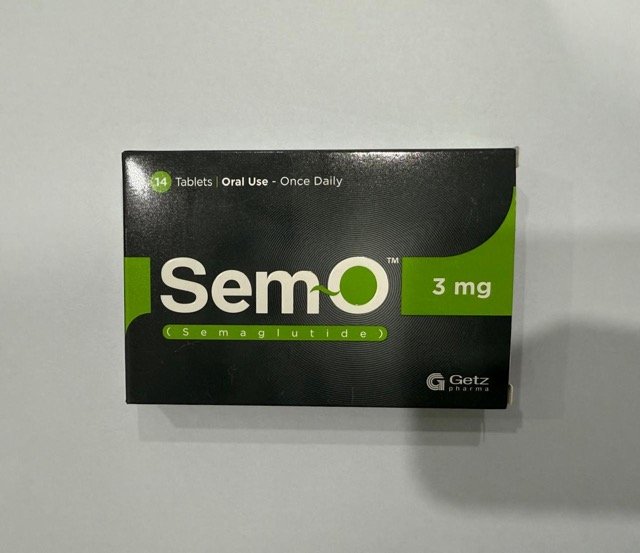Methoxyflurane (Penthrox) is a halogenated volatile anesthetic drug that is inidicated for the relief of moderate to severe acute pain.
Methoxyflurane Uses:
-
Moderate to severe, acute pain:
- It is used for the short-term relief of moderate to severe acute pain (in a conscious patient), associated with trauma or interventional medical procedures.
Methoxyflurane Dose in Adults:
Methoxyflurane (Penthrox) Dose in the treatment of moderate to severe acute pain:
- Inhalation:
- 3 mL initially; The dose may be repeated if required.
- The maximum dose is 6 mL/day.
- It should not be used on consecutive days.
- The lowest effective dose should be used as an analgesic.
- The treatment course should be limited to a total dose of 15 mL/week and no more than 6 mL/48 hours.
- The treatment course should not be repeated at an interval of fewer than 3 months.
Use in Children:
Not indicated.
Methoxyflurane Pregnancy Risk Category: C
- The drug can cross the placental boundary. The neonates born to mothers who used the drug have had their serum fluoride levels increase.
- It can cause respiratory depression or neurological problems in newborns if it is used during labor.
- Avoid Methoxyflurane during pregnancy and the peripartum, which includes labor.
Methoxyflurane use during breastfeeding:
- It is unknown if the drug will be excreted into breast milk.
- It is recommended that you use it with caution if you are lactating.
Dose in Kidney Disease:
- No dosage adjustments have been provided in the manufacturer’s labeling.
- It should be avoided in patients with clinically significant renal impairment.
Dose in Liver disease:
- No dosage adjustments have been provided in the manufacturer’s labeling; It should be used with caution.
- Avoid using it in patients with a history of liver impairment or dysfunction after previous methoxyflurane use or other halogenated anesthetics.
Common Side Effects of Methoxyflurane:
-
Central nervous system:
- Dizziness
- Headache
Less Common Side Effects of Methoxyflurane (Penthrox):
-
Cardiovascular:
- Flushing
- Hypertension
-
Central nervous system:
- Drowsiness
- Euphoria
- Anxiety
- Depression
- Neuropathy
- Impaired consciousness
- Amnesia
- Dysarthria
- Falling
- Intoxicated feeling
- Migraine
-
Dermatologic:
- Skin rash
-
Endocrine & metabolic:
- Increased lactate dehydrogenase
-
Gastrointestinal:
- Xerostomia
-
Genitourinary:
- Dysmenorrhea
-
Infection:
- Influenza
- Viral infection
-
Neuromuscular & skeletal:
- Back pain
- Sprain
-
Respiratory:
- Cough
Contraindications to Methoxyflurane (Penthrox):
- Hypersensitivity to methoxyflurane or other halogenated pain relievers or any component of this formulation
- As an anesthetic agent
- Significant impairment of the renal system
- Clinically evident hemodynamic instability
- Respiratory impairments that are clinically diagnosed
- Alteration in mentation caused by head injury, alcohol, or drugs
- Patients who have had a history of hepatic dysfunction after using methoxyflurane, or any other halogenated anesthetics in the past;
- Patients with malignant heatheria or genetic susceptibility.
Warnings and precautions
-
Cardiovascular effects
- It can cause hypotension or dose-related bradycardia. It is recommended to be taken in the doses that are safe for analgesia. However, cardiovascular effects are not severe.
-
CNS depression:
- It can cause depression in the central nervous system. It should be used with caution by patients who are required to maintain mental alertness or those who operate heavy machinery.
-
Hepatic effects: [Canadian Boxed Warning]
- Rarely has hepatotoxicity been reported when painkillers are used.
- Patients who have had a history of hepatic impairment due to previous exposure to methoxyflurane and other halogenated anesthetics should be advised not to use it.
- It should be used with caution for patients with liver disease and those at high risk of developing hepatic dysfunction.
-
Renal toxicities: [Canadian Boxed Warning]
- The drug has caused severe and irreversible renal damage in a dose-related way when it was administered in supratherapeutic dosages.
- To avoid toxicities, doses should be adjusted according to renal impairment.
- It should not be given on consecutive days due to renal injury. It is possible to increase the risk of toxic effects if it is administered with drugs that improve body metabolism (hepatic enzyme inducers).
- Geriatric patients, and those with predisposing risk factors for renal injury, should receive the lowest effective dose.
-
Respiratory depression
- High doses can cause respiratory depression.
-
Hepatic impairment
- Patients suffering from liver disease should be cautious when using it. The risk of toxic effects and systemic exposure can increase in patients with hepatic impairment.
-
Renal impairment
- Patients with kidney impairment should not take the lowest dose because they are at risk for nephrotoxicity. It should be used with caution in patients with kidney disease.
Methoxyflurane (United States: Not available): Drug Interaction
|
Alizapride |
May enhance the CNS depressant effect of CNS Depressants. |
|
Beta-Blockers |
Methoxyflurane may enhance the hypotensive effect of Beta-Blockers. |
|
Brexanolone |
CNS Depressants may enhance the CNS depressant effect of Brexanolone. |
|
Brimonidine (Topical) |
May enhance the CNS depressant effect of CNS Depressants. |
|
Bromopride |
May enhance the CNS depressant effect of CNS Depressants. |
|
Cannabidiol |
May enhance the CNS depressant effect of CNS Depressants. |
|
Cannabis |
May enhance the CNS depressant effect of CNS Depressants. |
|
Chlorphenesin Carbamate |
May enhance the adverse/toxic effect of CNS Depressants. |
|
CNS Depressants |
May enhance the adverse/toxic effect of other CNS Depressants. |
|
Dimethindene (Topical) |
May enhance the CNS depressant effect of CNS Depressants. |
|
Doxylamine |
May enhance the CNS depressant effect of CNS Depressants. Management: The manufacturer of Diclegis (doxylamine/pyridoxine), intended for use in pregnancy, specifically states that use with other CNS depressants is not recommended. |
|
Dronabinol |
May enhance the CNS depressant effect of CNS Depressants. |
|
Esketamine |
May enhance the CNS depressant effect of CNS Depressants. |
|
HydrOXYzine |
May enhance the CNS depressant effect of CNS Depressants. |
|
Kava Kava |
May enhance the adverse/toxic effect of CNS Depressants. |
|
Lofexidine |
May enhance the CNS depressant effect of CNS Depressants. Management: Drugs listed as exceptions to this monograph are discussed in further detail in separate drug interaction monographs. |
|
Magnesium Sulfate |
May enhance the CNS depressant effect of CNS Depressants. |
|
MetyroSINE |
CNS Depressants may enhance the sedative effect of MetyroSINE. |
|
Nabilone |
May enhance the CNS depressant effect of CNS Depressants. |
|
Piribedil |
CNS Depressants may enhance the CNS depressant effect of Piribedil. |
|
Pramipexole |
CNS Depressants may enhance the sedative effect of Pramipexole. |
|
ROPINIRole |
CNS Depressants may enhance the sedative effect of ROPINIRole. |
|
Rotigotine |
CNS Depressants may enhance the sedative effect of Rotigotine. |
|
Rufinamide |
May enhance the adverse/toxic effect of CNS Depressants. Specifically, sleepiness and dizziness may be enhanced. |
|
Selective Serotonin Reuptake Inhibitors |
CNS Depressants may enhance the adverse/toxic effect of Selective Serotonin Reuptake Inhibitors. Specifically, the risk of psychomotor impairment may be enhanced. |
|
Tetrahydrocannabinol |
May enhance the CNS depressant effect of CNS Depressants. |
|
Tetrahydrocannabinol and Cannabidiol |
May enhance the CNS depressant effect of CNS Depressants. |
|
Trimeprazine |
May enhance the CNS depressant effect of CNS Depressants. |
|
Risk Factor D (Consider therapy modification) |
|
|
Blonanserin |
CNS Depressants may enhance the CNS depressant effect of Blonanserin. |
|
Buprenorphine |
|
|
Chlormethiazole |
May enhance the CNS depressant effect of CNS Depressants. Management: Monitor closely for evidence of excessive CNS depression. The chlormethiazole labeling states that an appropriately reduced dose should be used if such a combination must be used. |
|
Droperidol |
May enhance the CNS depressant effect of CNS Depressants. Management: Consider dose reductions of droperidol or of other CNS agents (eg, opioids, barbiturates) with concomitant use. Exceptions to this monograph are discussed in further detail in separate drug interaction monographs. |
|
Flunitrazepam |
CNS Depressants may enhance the CNS depressant effect of Flunitrazepam. |
|
HYDROcodone |
CNS Depressants may enhance the CNS depressant effect of HYDROcodone. Management: Avoid concomitant use of hydrocodone and benzodiazepines or other CNS depressants when possible. These agents should only be combined if alternative treatment options are inadequate. If combined, limit the dosages and duration of each drug. |
|
Lemborexant |
May enhance the CNS depressant effect of CNS Depressants. Management: Dosage adjustments of lemborexant and of concomitant CNS depressants may be necessary when administered together because of potentially additive CNS depressant effects. Close monitoring for CNS depressant effects is necessary. |
|
Methotrimeprazine |
CNS Depressants may enhance the CNS depressant effect of Methotrimeprazine. Methotrimeprazine may enhance the CNS depressant effect of CNS Depressants. Management: Reduce adult dose of CNS depressant agents by 50% with initiation of concomitant methotrimeprazine therapy. Further CNS depressant dosage adjustments should be initiated only after clinically effective methotrimeprazine dose is established. |
|
Opioid Agonists |
CNS Depressants may enhance the CNS depressant effect of Opioid Agonists. Management: Avoid concomitant use of opioid agonists and benzodiazepines or other CNS depressants when possible. These agents should only be combined if alternative treatment options are inadequate. If combined, limit the dosages and duration of each drug. |
|
OxyCODONE |
CNS Depressants may enhance the CNS depressant effect of OxyCODONE. Management: Avoid concomitant use of oxycodone and benzodiazepines or other CNS depressants when possible. These agents should only be combined if alternative treatment options are inadequate. If combined, limit the dosages and duration of each drug. |
|
Perampanel |
May enhance the CNS depressant effect of CNS Depressants. Management: Patients taking perampanel with any other drug that has CNS depressant activities should avoid complex and high-risk activities, particularly those such as driving that require alertness and coordination, until they have experience using the combination. |
|
Sodium Oxybate |
May enhance the CNS depressant effect of CNS Depressants. Management: Consider alternatives to combined use. When combined use is needed, consider minimizing doses of one or more drugs. Use of sodium oxybate with alcohol or sedative hypnotics is contraindicated. |
|
Suvorexant |
CNS Depressants may enhance the CNS depressant effect of Suvorexant. Management: Dose reduction of suvorexant and/or any other CNS depressant may be necessary. Use of suvorexant with alcohol is not recommended, and the use of suvorexant with any other drug to treat insomnia is not recommended. |
|
Tapentadol |
May enhance the CNS depressant effect of CNS Depressants. Management: Avoid concomitant use of tapentadol and benzodiazepines or other CNS depressants when possible. These agents should only be combined if alternative treatment options are inadequate. If combined, limit the dosages and duration of each drug. |
|
Zolpidem |
CNS Depressants may enhance the CNS depressant effect of Zolpidem. Management: Reduce the Intermezzo brand sublingual zolpidem adult dose to 1.75 mg for men who are also receiving other CNS depressants. No such dose change is recommended for women. Avoid use with other CNS depressants at bedtime; avoid use with alcohol. |
|
Risk Factor X (Avoid combination) |
|
|
Aminoglycosides |
May enhance the nephrotoxic effect of Methoxyflurane. |
|
Amphotericin B |
Methoxyflurane may enhance the nephrotoxic effect of Amphotericin B. |
|
Azelastine (Nasal) |
CNS Depressants may enhance the CNS depressant effect of Azelastine (Nasal). |
|
Barbiturates |
May enhance the nephrotoxic effect of Methoxyflurane. Barbiturates may increase the metabolism of Methoxyflurane. |
|
Bromperidol |
May enhance the CNS depressant effect of CNS Depressants. |
|
Colistimethate |
May enhance the nephrotoxic effect of Methoxyflurane. |
|
Orphenadrine |
CNS Depressants may enhance the CNS depressant effect of Orphenadrine. |
|
Oxomemazine |
May enhance the CNS depressant effect of CNS Depressants. |
|
Paraldehyde |
CNS Depressants may enhance the CNS depressant effect of Paraldehyde. |
|
Polymyxin B |
Methoxyflurane may enhance the nephrotoxic effect of Polymyxin B. |
|
Tetracyclines |
May enhance the nephrotoxic effect of Methoxyflurane. |
|
Thalidomide |
CNS Depressants may enhance the CNS depressant effect of Thalidomide. |
Monitoring parameters:
- Liver function
- Renal function
- Blood pressure
- Heart rate
- Pain relief
How to administer Methoxyflurane (Penthrox)?
- Inhalation is preferred, but it should be done under the supervision and guidance of a healthcare professional.
-
- The activated carbon chamber is attached first to the dilutor hole of the inhaler.
- Hold the bottle upright while you separate the inhaler and the cap.
- To ensure that the inhaler is properly saturated, tilt the inhaler to 45 degrees.
- After inhaling, the patient can exhale gently through the mouthpiece of the inhaler.
- The patient can then begin to breathe normally after a gentle start.
- Patients who need stronger analgesia may cover the activated carbon chamber's dilutor hole with a finger.
- Inhaled intermittently. The time taken to relieve pain is reduced by continuous administration.
Mechanism of action of Methoxyflurane (Penthrox):
- It is a halogenated volatile and anesthetic drug which has analgesic properties when inhaled in very low amounts.
- Although the exact mechanism of analgesia remains elusive, some evidence suggests that it is possible to have some analgesic properties through its effects on beta-endorphins or substance P.
Onset of action:
- Rapid in 5 minutes
Time of action:
- Continuous inhalation can last 25-30 minutes
- Intermittent inhalation takes approximately 60 minutes
Distribution:
- It is a lipophilic drug, which diffuses into fat tissues and is slowly released over several days.
Metabolism:
- It is metabolized in the liver to dechlorination and o-demethylation via the enzymes CYP 2E1 and 2A6 to free fluoride, oxalic acid, difluoromethoxyacetic acid and dichloroacetic acid
Excretion:
- About 60% of the drug is eliminated in urine as metabolites.
- Around 40% of the carbon dioxide is eliminated via the respiratory tract, either unaltered or via the respiratory system.
International Brand Names of Methoxyflurane:
- Penthrox
- Penthrop
Methoxyflurane Brand Names in Pakistan:
No Brands Available in Pakistan.



.jpeg)



